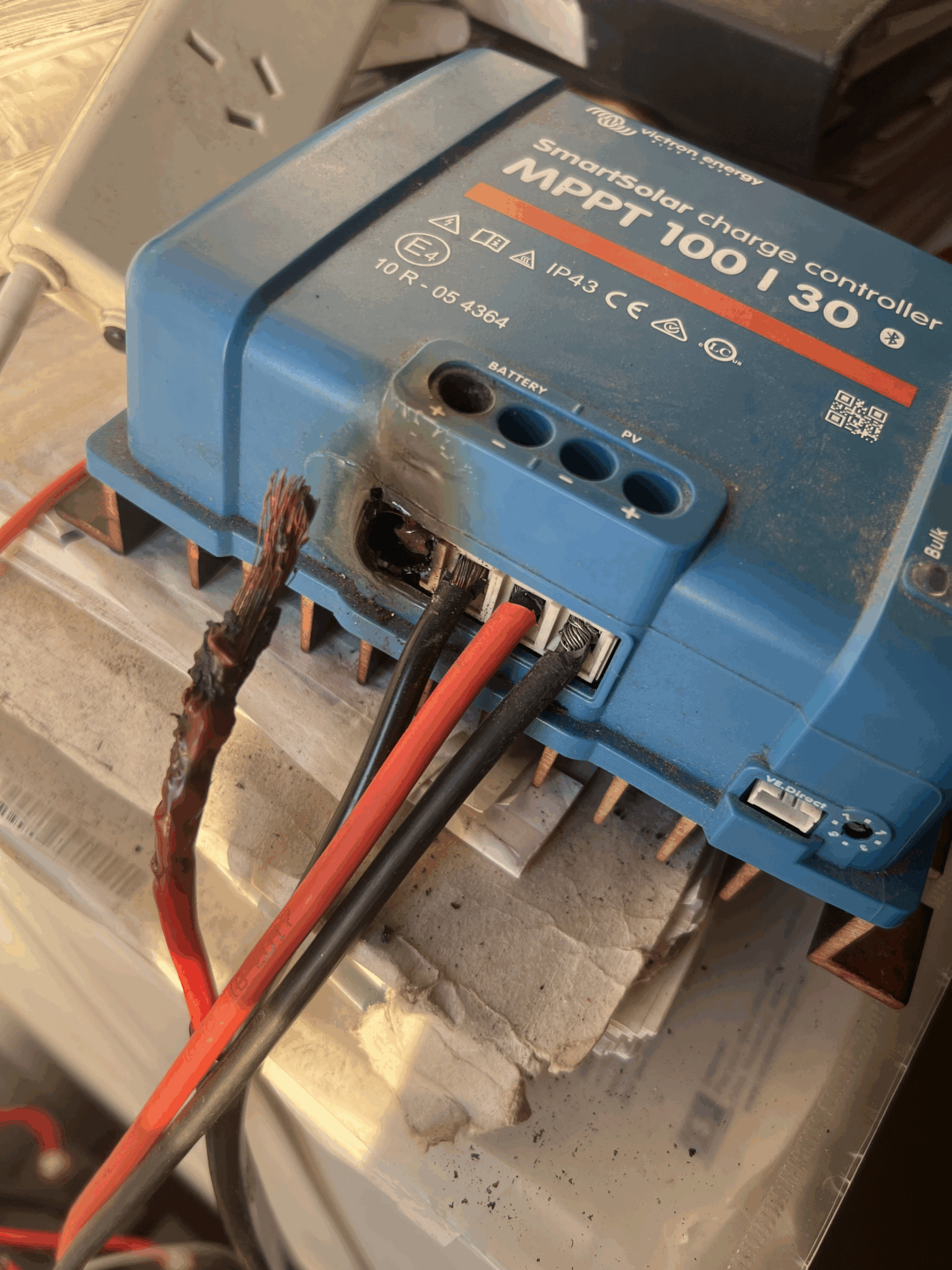Which Victron MPPT to Choose? A Practical Guide for Solar Enthusiasts
In this blog article, we look at Why Your Victron MPPT Choice Can Make or Break Your System. An example would be an off-grid homesteader in a hot humid location. They install a 2000W solar array but picked an undersized MPPT. Their system would overheated daily, losing ~20% efficiency. After switching to a Victron 250/100, their energy harvest jumped by ~40%. Like this homesteader, many solar users overlook MPPT sizing, compatibility, and real-world conditions. Let’s fix that.

Key Takeaways
✅ Match your solar array voltage and current to the MPPT’s max input—oversizing by 20-30% future-proofs your system.
✅ Use Victron’s MPPT Calculator for precise sizing. It factors in temperature, shading, and battery chemistry.
✅ Larger MPPTs (150V+/250V+) are ideal for off-grid homes, while 75V/100V models suit RVs and boats.
✅ Bluetooth models (SmartSolar) allow remote monitoring. A game changer for troubleshooting.
✅ Real-world efficiency drops by 5~15% due to heat, wiring losses, and partial shading. Plan accordingly.
How to Size a Victron MPPT: The Goldilocks Principle
Victron MPPTs range from 15A to 250A, with voltage limits spanning 75V to 250V+. Picking the right one boils down to:
A. Solar Array Voltage vs. Victron MPPT Limits
- 75V/100V controllers (e.g., Victron 100/30) fit small systems (12V/24V batteries, ≤3 panels).
- 150V models (e.g., 150/35) handle 4-6 panels (48V batteries).
- 250V+ MPPTs (e.g., 250/100) are for large off-grid arrays (10+ panels).
Pro Tip: Solar panels’ Voc (Open-Circuit Voltage) spikes in cold weather. Always check your location’s lowest temperature using NREL’s PVWatts and ensure Voc < MPPT’s max input.
B. Current Handling: Don’t Bottleneck Your Array
- MPPT current rating ≥ Solar array’s max current (Imp).
- Example: A 2000W array on a 24V battery needs 2000W ÷ 24V = ~83A. A Victron 150/85 would fit.
Common Mistake: Users forget parallel vs. series wiring impacts voltage/current. Series = higher voltage; parallel = higher current.
Exceeding both an MPPT’s Voc and Isc can affect the MPPT’s performance or worse cause damage to the device and surroundings.
Designing within the OEM’s parameters ensure maximum performance and that no energy is curtailed. This also applies to inverters with inbuilt MPPTs.

Victron’s Secret Weapon: The Victron MPPT Calculator
Victron’s MPPT Calculator is a lifesaver. It considers:
- Panel specs (Voc, Imp, temperature coefficients).
- Battery voltage (12V, 24V, 48V).
- Environmental factors (shading, tilt angle).
Case Study: A boat owner in Florida used the calculator and realized his Victron 75/15 was too small for his 400W array. Upgrading to a 100/20 boosted his yield by 25%. The output from the solar array was being curtailed due to the output of the MPPT being only 15A. The boat owner was lucky as well that there was no equipment damage due to the high voltage connected to the Victron 75/15. Usually the equipment protect themselves until to a certain point before failure. This protection can be in the form of derating or shutting down.
SmartSolar vs. BlueSolar: Which One Wins?
| Feature | SmartSolar (BT) | BlueSolar (No BT) |
|---|---|---|
| Remote Monitoring | ✅ (VictronConnect App) | ❌ |
| Battery Life | Slightly lower (BT uses power) | Longer |
| Price | 10-20% higher | More affordable |
Verdict: If you value data (like live power curves, error logs), SmartSolar is worth it. For simple setups, BlueSolar works.
Real-World Efficiency: Why Datasheets Lie
Victron’s 98% efficiency claims are lab-tested. Real-world losses come from:
- Heat (controllers lose 3-8% efficiency at >40°C).
- Partial shading (one shaded panel can cut output by 50%).
- Wiring losses (undersized cables add 5-10% resistance).
Fix:
✔ Mount MPPTs in cool, shaded spots.
✔ Use 4mm²+ cables for runs >3m.
✔ Avoid shading with optimizers (if possible).
NB: Datasheets are being on Ideal testing conditions. When designing, you should request from your OEM product voltage and temperature characteristics curves. These assist in estimating the expected performance of a product based on the ambient temperature and connected voltage.
For example, an MPPT or inverter installed in a > 40°C room will cause the equipment to derate in order to protect its electronics from damage as they overheat. In the system there will also be other losses that were not factored in during the ideal testing conditions.
Common Use Cases: Which Victron MPPT Fits You?
A. RVs & Boats
- Best Pick: Victron 100/20 or 100/30 (handles 2-4 panels, compact). This is a rule of thumb not a must.
- Why? 12V/24V systems, limited space.

B. Off-Grid Homes
- Best Pick: Victron 250/100 or 150/70 (48V battery, 5kW+ arrays). This is a rule of thumb not a must.
- Why? High voltage = lower current = less wiring cost.
C. Small Cabins
- Best Pick: Victron 75/15 (1-2 panels, 12V battery). This is a rule of thumb not a must.
- Why? Cheap, reliable, easy to install.
FAQ: Quick Victron MPPT Answers
Q1. Can I connect two MPPTs to one battery?
✅ Yes! Victron MPPTs sync via VE.Smart Networking (SmartSolar only).
Q2. What happens if I exceed the voltage limit?
❌ The MPPT shuts down to protect itself. Always stay 20% below max Voc.
Q3. Do Victron MPPTs work with lithium batteries?
✅ Yes! They support LiFePO4, lead-acid, and more (selectable in settings).
Q4. How long do Victron MPPTs last?
🔋 10-15 years with proper cooling and maintenance.
Final Thoughts: Don’t Guess! Calculate!
Choosing the right Victron MPPT isn’t about bigger = better. It’s about matching your solar array, battery, and environment. Use Victron’s tools, learn from real world cases (like the boat owner and homesteader), and future-proof your system.
Need help? Drop a comment below for deeper insights.

Leave a Reply